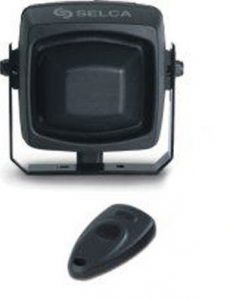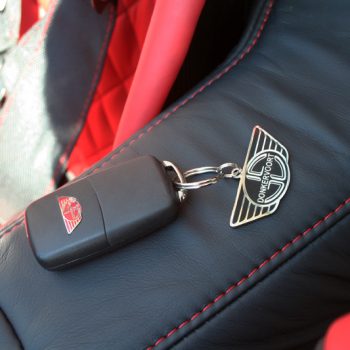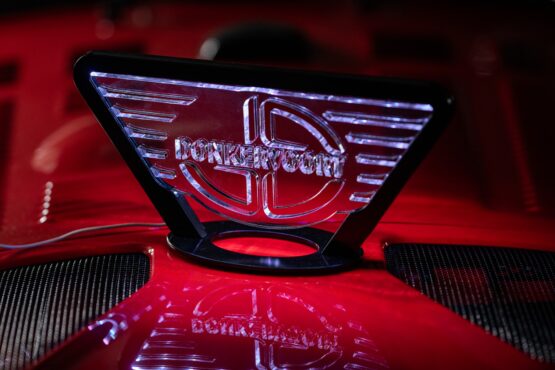Operation – Overview of the alarm system D8 1999 – 2009 (click images to enlarge)
Keys
The vehicle is delivered with the following standard keys:
- Two main keys, these both fit in the ignition.
- Fuel cap key, this is a key for opening and locking the fuel cap (early models).
- The number of the key is printed on this plastic tag (this is the number which is required should you wish to purchase a new key), as well as the identification number for the de-activation. New, or extra, keys can be ordered using these numbers. The new keys can only be put into working by the supplier of the vehicle.
It is important to store the plastic tag in a safe place. Should the key be lost, the old key must be blocked by the supplier. In order to do this, it is necessary to take all old keys and the identification number to the supplier. In order to prevent unauthorised keys being made or the de-activation being re-programmed, the tag may never be stored in the vehicle.
Description of the alarm system
 The vehicle is equipped as standard with de-activation. This means that if an attempt is made to steal the car, it will not be possible to start the car. If the optional alarm system has been fitted, this will only work if the key is not in the ignition. If, once the engine has been switched off, the key is left in the ignition, the de-activation which is part of the alarm system will not be activated. In this case, the battery will (slowly) de-charge. In order to prevent this, the key should be removed from the ignition when the engine is switched off. The de-activator is then automatically activated and the engine can only be re-started when this has been deactivated using the remote control. The alarm system can only be activated and de-activated using the remote control delivered with the vehicle.
The vehicle is equipped as standard with de-activation. This means that if an attempt is made to steal the car, it will not be possible to start the car. If the optional alarm system has been fitted, this will only work if the key is not in the ignition. If, once the engine has been switched off, the key is left in the ignition, the de-activation which is part of the alarm system will not be activated. In this case, the battery will (slowly) de-charge. In order to prevent this, the key should be removed from the ignition when the engine is switched off. The de-activator is then automatically activated and the engine can only be re-started when this has been deactivated using the remote control. The alarm system can only be activated and de-activated using the remote control delivered with the vehicle.
Activate: press the button on the transmitter, the indicators will light up once for three seconds.
De-Activate: press the button, the indicators will light up three times for one second each time. If there is an attempt to break in, the indicators will light up five times for one second each time.
An activated alarm is indicated by a flashing red LED light in the instrument panel. If there has been an attempt to break in, the LED light will, following the de-activation of the alarm, flash for two, three, four or six times with a subsequent pause of two seconds. If the key is in the ignition and you attempt to activate the alarm, this will not be activated, the alarm will not go off if an attempt is made to break in, and the vehicle will start normally. The alarm system is fitted with its own battery which ensures that the alarm goes off even if the battery voltage is interrupted. The alarm will also go off even if the battery is completely empty. The alarm system protects the vehicle in a number of ways: when the alarm is activated, this will go off if the vehicle is jacked up or towed away, or when the bonnet is opened. The alarm will also go off if there is any movement in the interior.
NOTE: For a more detailed description of the alarm system, please refer to the User Guide delivered with the alarm.
Starting the engine
- When starting, make sure that the gear-stick is in neutral and engage the handbrake firmly.
- Press the clutch in when starting; the starter motor then only has to activate the engine.
- As soon as the engine starts, release the ignition key; the starter motor should not be active at the same time.
- Once started, the cold engine will produce more noise than usual. This is completely normal and is, therefore, not a problem.
- As long as the engine has not reached normal operating temperature, (the oil temperature should be around 900 C), please avoid high rpm’s and full acceleration.
- Do not press the accelerator when starting the engine.
When starting the engine in enclosed areas, there is a risk of poisoning.




